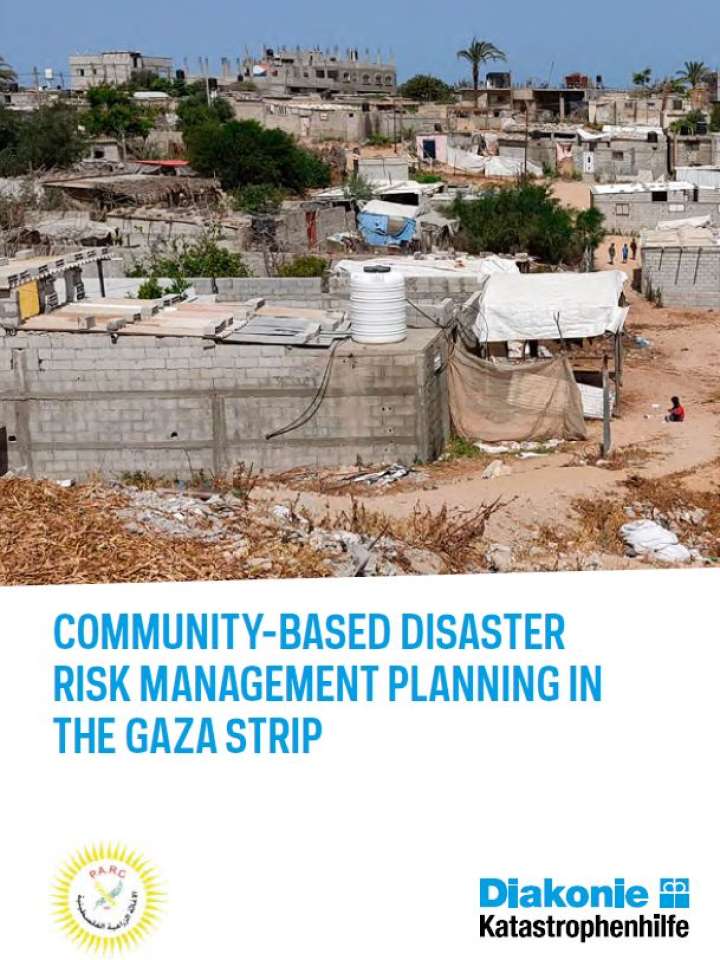Community-based disaster risk management planning in the Gaza Strip
This report presents the results of a comparative disaster risk assessment and Community-based Disaster Risk Management (CBDRM) planning exercise conducted by Diakonie Katastrophenhilfe (DKH) and the Palestine Agricultural Development Association (PARC) in the Gaza Strip. The assessment is one component of the implementation of the community-based disaster risk management approach for the first time in the Gaza Strip. The CBDRM approach comprises six stages including community selection, rapport building, disaster risk assessment, CBDRM planning, implementation, and monitoring and evaluation. Accordingly, this report discusses the outcomes of the first four stages. The next steps will be implemented in cooperation with DKH, PARC, and other organizations interested in supporting the assessed communities to become more resilient against present and future disaster risks.
The comparative disaster risk assessment showed that the assessed communities had risk scores ranging from 22% to 42%. The most at-risk communities were found to be Al Zanna, Al Suraij, Shokat as Sufi, the Sweden Village, and Khuza’a, whose scores ranged from 34 to 42%. These communities are all located in the southern governorates of Gaza, which face more water scarcity and water quality deterioration. Four of the communities are also border communities and face a high risk of war destruction and loss of crops because of herbicide spraying by Israeli aircraft. The Sweden village suffers uniquely from the coastal erosion hazard, being situated close to the shoreline to the south of Rafah. The populations of these communities are also highly dependent on natural resources, as they are primarily farmers and fishermen.
The 17 targeted communities prioritized 53 hazards for their CBDRM plans – three each, except two communities that prioritized four. Of the 53 hazards, 45 were related to the hazards used for the purpose of the disaster risk assessment, showing the high relevance of the selected hazards. Additionally, most of the other hazards prioritized by the communities were related to those included in the disaster risk assessment, such as tap water pollution (4 communities), groundwater organic pollution (1 community), and industrial facilities (1 community). The hazard that fit the least with those selected for the disaster risk assessment was the fishing occupational hazard, selected by 2 communities in which most members are fishermen. The CBDRM plans for these communities are also summarized in this report. Some of the measures were preventive, mostly related to manmade hazards such as environmental and industrial facilities, such as campaigning to relocate these facilities. Other measures were related to mitigation, such as establishing structures to mitigate the impacts of floods and flash floods. For hazards such as war destruction, provision of well-equipped shelters and preparing emergency preparedness and response plans was a common theme.
Explore further
